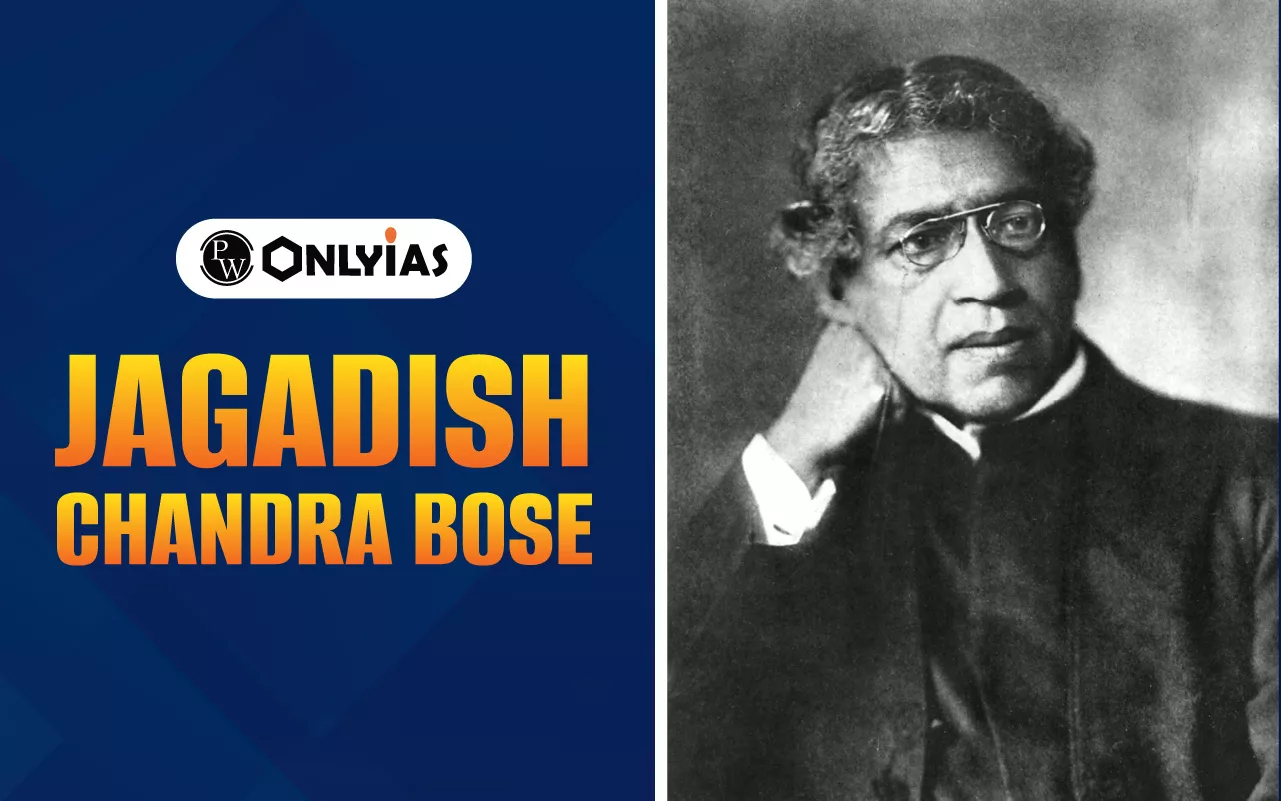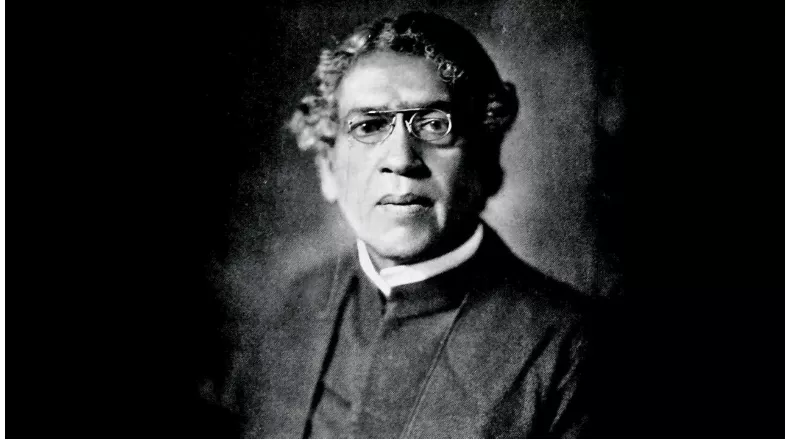Jagadish Chandra Bose was a pioneering Indian scientist known for his groundbreaking work in radio wave research and plant physiology. His legacy as a polymath and father of radio science remains influential in modern scientific research.

Sir Jagadish Chandra Bose (1858–1937) was an innovative Indian scientist. He made contributions to physics, biology, and botany. He was able to show that plants respond to external stimuli just like animals. He invented the crescograph, an instrument that measured a plant’s response time and speed in growth against gravity. He was also an early pioneer in the field of radio science.
He developed electromagnetic signals in the microwave range, unacceptable to radio science at the time, and improved radar and radio wave detector instruments. He founded the Bose Institute in Kolkata, the first interdisciplinary research institute in Asia. Most people recognised Jagadish Chandra Bose as the father of Bengali science fiction. His influential work in experimental science paved the way for experimental science to flourish in India, earning him recognition around the world, and he had a moon crater named after him.
Jagadish Chandra Bose was a renowned Indian scientist and inventor who made a significant contribution in the fields of physics, biology, and plant physiology. He lived from 1858 to 1937, and he was the first to investigate radio waves and the sensitivity of plants to external stimuli. He also took big steps in the initial evolution of wireless communication and did a lot to encourage experimental science in India. Bose is commonly regarded as a versatile scientist who has filled the divide between physics and biology in innovative ways.

| Who Was Jagadish Chandra Bose | |
| Aspect | Details |
| Post Category | Jagadish Chandra Bose |
| Full Name | Sir Jagadish Chandra Bose |
| Birth | November 30, 1858, Mymensingh, Bengal Presidency, British India (now in Bangladesh) |
| Death | November 23, 1937, Giridih, Bihar, India |
| Education | St. Xavier’s College, Calcutta; University of Cambridge (Natural Sciences); University of London (Natural Science, research with Lord Rayleigh) |
| Fields of Interest | Physics, Plant Physiology, Botany, Radio Science, Science Fiction Writing |
| Key Contributions | Pioneer in radio microwave optics, early use of semiconductor junctions for detecting radio waves, invention of Crescograph for measuring plant growth, demonstrating plant responses to stimuli, founding the Bose Institute (1917) |
| Notable Works | Response in the Living and Non-Living (1902), The Nervous Mechanism of Plants (1926), Bengali science fiction, including Niruddesher Kahini (1896) |
| Positions Held | Professor of Physics at Presidency College, Calcutta; Founder and Director of Bose Institute (1917-1937) |
| Awards and Honours | First Asian US patent (1904), Fellow of the Royal Society of London, Vienna and Finland; IEEE recognition as father of radio and wireless communication; Moon crater named in his honour |
| Legacy | Founder of the Bose Institute, considered the father of Bengali science fiction, a major contributor to experimental science in India, anticipated the existence of P-type and N-type semiconductors |
Jagadish Chandra Bose spent his childhood in an atmosphere that was acquainted with Indian cultural values and was born in a Bengali Brahmo family, in a town of Bengal Presidency (modern Bangladesh) on November 30, 1858. The early education of Bose was emphasised by his father on the role of learning Bengali first before English.
Having studied both in vernacular and English medium schools, including St. Xavier’s School in Kolkata, Bose went ahead to acquire higher education with a bent towards science. He first intended to pursue medicine at University of London, but he was forced to drop out because of health complications. He, instead, did research with a Nobel laureate, Lord Rayleigh, at the University of Cambridge.
When Bose returned to India, he joined the Presidency College at Kolkata as a professor of physics and did not stop his scientific inquiries despite the scarcity of funds and racial biases of the colonial period. This hard work led him to become the founder of the Bose Institute in 1917, the first interdisciplinary research institute in Asia, in which he worked as director until his death on November 23, 1937.
Jagadish Chandra Bose was born on November 30, 1858. This is an important date because this is the day when one of the pioneer scientists of India was born.
Jagadish Chandra Bose’s birth took place in Mymensingh, which was a constituent of the Bengal Presidency in British India. This is presently a part of Bangladesh. His early life in that place and subsequent schooling in Calcutta made him think in the scientific way.
Bose started his education by attending the vernacular school according to the desire of his father. He subsequently became a student of St. Xavier’s College, Kolkata and graduated with a bachelor’s degree. He attempted to study medicine at the University of London, but was forced to drop out because of health issues. He later joined Lord Rayleigh at the University of Cambridge, where he perfected his research abilities in physics further before going back to India to teach and carry out research.
Among the key works, Bose recorded his work in the research he carried out. Among them, the most prominent ones were in the field of physiological reactions to the environment: Response in the Living and Non-Living (1902) and the Nervous Mechanism of Plants (1926). These books assisted in creating the notion that plants are capable of responding to stimuli almost the same way animals do.
Check Out UPSC CSE Books
Visit PW Store
Among the most renowned inventions Bose made was the so-called cresograph, which was an apparatus that could measure the tiniest movements in plant tissues and increase their reaction to stimuli with reverberation as much as 10,000 times. He was one of the pioneers in demonstrating experimentally that plants are sensitive with regard to their physiological responses to heat, light, and noise. Moreover, Bose had enhanced earlier radio wave detectors known as coherers, which provided an input to the area that would ultimately result in the contemporary wireless technology.
Bose was an inventive person, and combined both biology and physics to establish biophysics as a science. He demonstrated that plants and animals react to external stimuli, which contradicted scientific opinions accepted at the time. His radio wave discoveries were also ahead of several inventions in wireless communication. Bose helped to advance the scientific research system in India through the Bose Institute. However, in addition to his scientific contribution, he is regarded as an innovator of Bengali science fiction.
Despite the racial discrimination against Bose that prevented him from earning the Nobel Prize, he earned a number of awards in his life. In 1917, the British government knighted him because of his work in science. Also, his legacy is still commemorated by a crater on the Moon bearing his name, and the Bose Institute is still one of the most prominent research facilities in India.
Ready to boost your UPSC 2026 preparation? Join PW’s UPSC online courses today!
Jagadish Chandra Bose was an Indian scientist and a pioneer in the field of plant physiology and radio waves. He has worked in the fields of biophysics and wireless communication and established the Bose Institute.
Bose has also invented the rescograph, which was used to measure plant reactions to stimuli, and the enhanced coherer, which was useful in detecting radio waves in their early years.
His outstanding books were The Response in the Living and Non-Living (1902) and The Nervous Mechanism of Plants (1926), and they recorded the research on plant physiology.
In 1917, he was knighted, and a lunar crater bearing his name and the Bose Institute celebrates him.

<div class="new-fform">
</div>